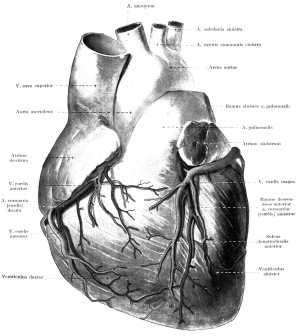- Navigating Your Midlife Crisis: Embracing New Possibilities
- City Raccoons Showing Signs of Domestication
- Mapping the Exposome: Science Broadens Focus to Environmental Disease Triggers
- One Week Less on Social Media Linked to Better Mental Health
- Your Brain Changes in Stages as You Age, Study Finds
- Some Suicide Victims Show No Typical Warning Signs, Study Finds
- ByHeart Formula Faces Lawsuits After Babies Sickened With Botulism
- Switch to Vegan Diet Could Cut Your Greenhouse Gas Emissions in Half
- Regular Bedtime Does Wonders for Blood Pressure
- Dining Alone Could Mean Worse Nutrition for Seniors
Too Many Stroke Victims Don’t Get Clot-Busting Drug: Study

Stroke victims can be saved through the timely use of a powerful clot-busting drug, but certain groups of patients still aren’t getting the medication quickly enough to help, a new study reveals.
Blacks, Hispanics, women, seniors on Medicare and people in rural areas are less likely to be treated with tissue plasminogen activator (tPA) after suffering a stroke, researchers found.
The drug works by dissolving clots that have blocked flow of blood to the brain, causing what is called an ischemic stroke.
To have any effect, tPA must be administered within 4.5 hours of the start of a stroke, and it appears many patients aren’t getting to the hospital and through emergency evaluation in time to receive the drug, said lead researcher Dr. Tracy Madsen. She’s an assistant professor of emergency medicine at Brown University’s Warren Alpert Medical School in Providence, R.I.
Her study team reviewed the records of more than 563,000 patients who suffered an ischemic stroke between 2005 and 2011.
Every year, patients were 11 percent more likely to be treated by tPA, even though across the entire period of time only 3.8 percent of total patients got the clot-busting drug, researchers reported.
The team found certain types of patients were less likely to receive tPA:
- Blacks were 38 percent less likely than whites.
- Hispanics were 25 percent less likely than whites.
- Women were 6 percent less likely than men.
- People with private insurance were 29 percent more likely to receive tPA compared to those on Medicare.
- People living in the so-called “Stroke Belt” in the southeastern United States were 31 percent less likely than those living elsewhere to receive tPA.
“I think it’s something that’s probably decreasing over time, but unfortunately still existed in our findings,” Madsen said of the disparities.
On the other hand, stroke victims treated at a large urban hospital, a teaching hospital or a designated stroke center had a better chance of prompt treatment that would include tPA.
“They are much more likely to have stroke protocols in place that make things happen faster,” Madsen said. “Patients get their brain scans faster. Patients are evaluated more quickly when they arrive at the door. It really is treated as an emergency.”
People also were more likely to get tPA if they were treated at a hospital participating in a program sponsored by the American Stroke Association that focuses on faster delivery of treatment to stroke patients, Madsen said.
Participating hospitals are awarded based on their performance. Patients treated at a top-performing hospital in the program were twice as likely to get tPA compared to being at a hospital not in the program, the researchers found.
Factors that might slow stroke treatment for minority groups include access to health care or insurance, Madsen said.
“There’s been a long history of these groups being treated less aggressively for stroke,” she said.
Women may also exhibit atypical stroke symptoms, which can slow their evaluation, Madsen said. In addition, many women have strokes at an advanced age, and doctors can be reluctant to administer tPA to elderly people over fear of side effects.
The findings were to be presented Thursday at the International Stroke Conference, in Houston. Research presented at meetings is viewed as preliminary until published in a peer-reviewed journal.
A second study presented at the same meeting indicated that people who get tPA before they arrive at the hospital do even better.
Patients transported in a “mobile stroke unit” — an ambulance specially equipped to diagnose and treat stroke on route to the hospital — had a lower risk of stroke-related disability than people who received tPA at the hospital, researchers from the University of California, Los Angeles, found.
Led by Dr. May Nour, the team compared 305 patients given tPA in a mobile stroke unit with 353 patients who got tPA at the hospital.
The researchers concluded that for every 1,000 stroke patients given tPA on their way to the hospital, 182 will be less disabled by their stroke and 58 will have no disability at all.
People can improve chances for themselves and their family members by learning the signs of stroke and calling 911 for help, rather than driving the victim to the hospital, said Daniel Lackland, a professor of neurology with the Medical University of South Carolina.
That way, paramedics can evaluate the patient and communicate ahead with the hospital, speeding up treatment time by making sure brain scanners are available and specialists are ready for the incoming patient, he said.
“Everybody needs to know if I see one of these signs of a stroke, I need to call 911,” said Lackland, a spokesman for the American Stroke Association. “You don’t wait and wonder if the symptoms of a stroke are going to go away.”
Experts recommend the F.A.S.T. guidelines for recognizing a stroke: Face drooping, Arm weakness or Speech difficulty means Time to call 911.
More information
For more about tPA, visit the American Stroke Association.
Source: HealthDay
Copyright © 2025 HealthDay. All rights reserved.










